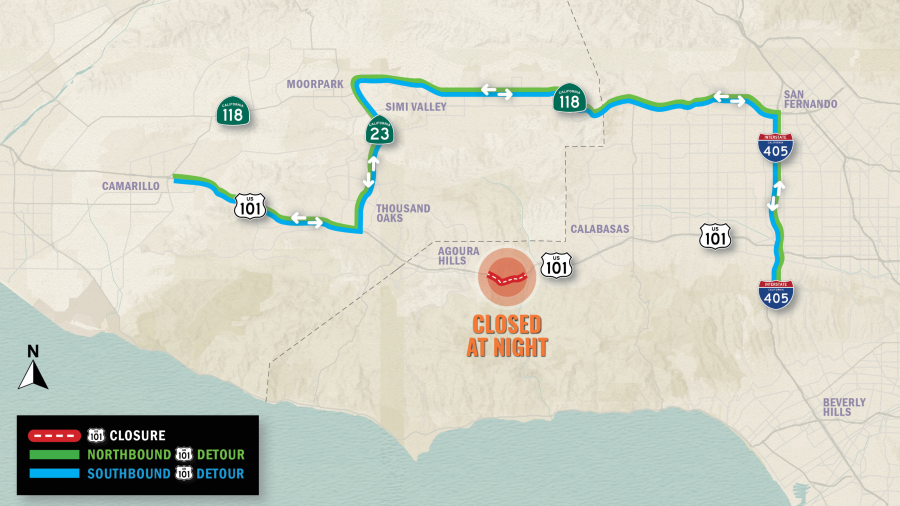Closures on the 101 Freeway through Agoura Hills begin Monday night for the next phase of what is being described as the world’s largest wildlife crossing.
All lanes on the freeway will be shut down for several hours each night between Chesebro Road and Liberty Canyon Road so crews can lift dozens of concrete beams that will form the skeleton of the crossing.
Caltrans posted Sunday night that the closures will take place Monday through Friday between 11 p.m. and 4 a.m. for the next several weeks.

The department provided commuters with a map to help navigate around the project during construction times.
One option was to use State Route 118 further north of the closure to drive around the Agoura Hills and Calabasas areas.
When this phase is complete, Caltrans will close the freeway in the same area again in the fall to work on its next phase.
The crossing ultimately will connect two natural landscapes bisected by one of the nation’s busiest highways.
The crossing will stretch more than 200 feet long and 165 feet wide across the roadway.

Scientists say the crossing will minimize inbreeding among the wildlife population.
“We have the science that the mountain lions, bobcats and the coyotes come right up to the 101 and they go back,” Agoura Hills Mayor Illece Buckley Weber said. “They’re smart enough not to cross, and that’s one of the problems. We need them to cross back and forth between the Santa Monica Mountains.”
Coming in at an estimated $92 million, the crossing is one of the largest infrastructure projects underway in Southern California and is scheduled to be completed in 2025.
A virtual meeting will be open to the public Monday night to share further details about the project, Caltrans stated in its post on X, formerly Twitter.
The meeting will be held from 4 p.m. to 5 p.m. and can be accessed through the following link: https://tinyurl.com/US101Meeting. Caltrans also posted its phone number 1-408-418-9388 and the access code: 249 882 34807.




















